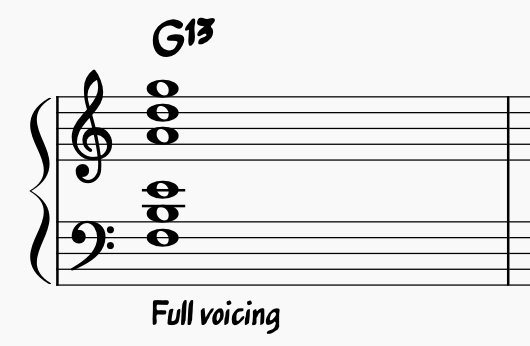
Here’s a nice full voicing for a G13 chord:

Blossom Dearie uses this voicing in the introduction to the song Little Jazz Bird on the 1952 album My Gentleman Friend.
The chord has an augmented 4th (or tritone) at the bottom with perfect 4ths above. The tritone includes the 7th (F) and 3rd (B) that best characterize a dominant 7th chord, followed by the 13th (E) and 9th (A) tensions, and then the fifth (D) and root (G).
This voicing takes both hands, so it is useful for accompanying another instrument or voice, or for chord solos.
For a version that will fit in the left hand to accompany right hand solos, or for simpler texts, the simplest is just the 3rd and 7th:
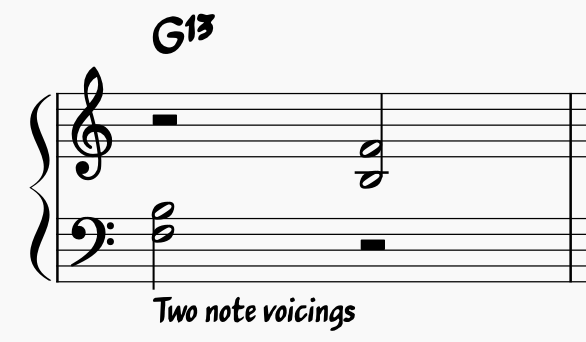
The first chord is just the bottom two notes of the full chord. The second chord is the next inversion of those two notes. Choose which one to use based on where your hand is and the desired sound. Other inversions are probably too high or too low to be useful.
A three note version adds the next tension a 4th (or so) higher:
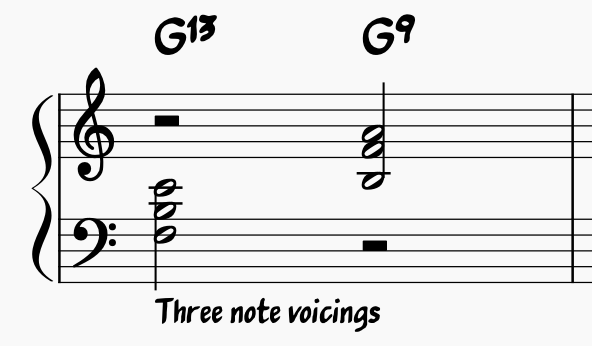
The first chord adds the 13th and the second adds the 9th.
A four note version includes both the 9th and 13th tensions in both inversions:
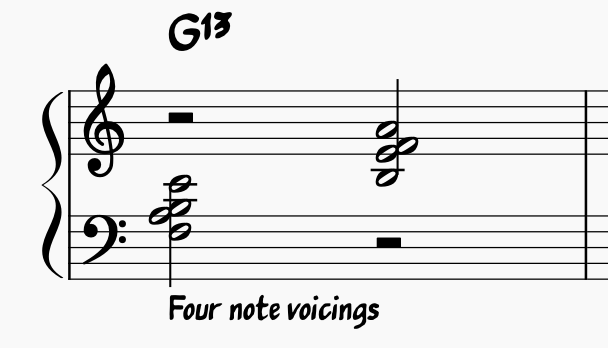
These voicings are the first and third inversions of an F Major 7 b5 chord.
Both the three and four note voicings are useful and good sounding. You can choose between them depending on the desired density and whether you want to double or avoid doubling of notes played in the right hand.
Unless the chord symbol or melody says otherwise, it is usually safe to include 9th and 13th tensions in any unaltered dominant 7th chord, so you can use either of these voicings in any of those cases.
As a rule of thumb, when using this voicing for different dominant 7th chords, you should make sure that all of the notes in the chord fall within range of the notes from low C to high C:
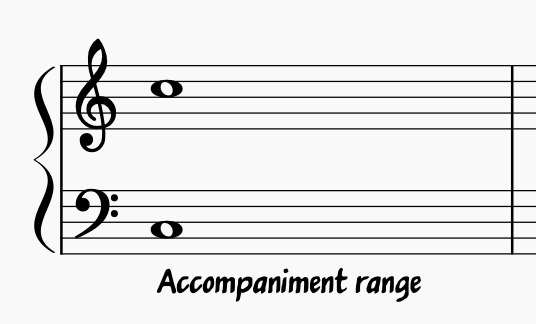
Here’s a similar full voicing for a D7 altered chord:
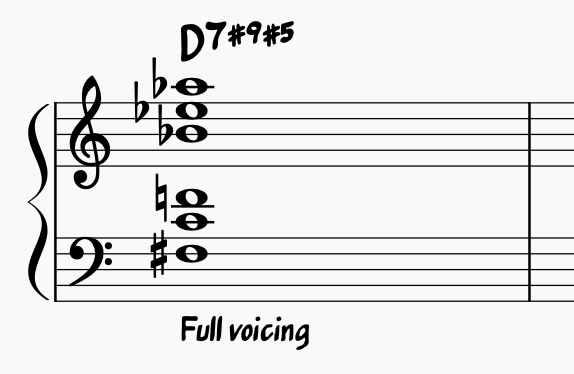
This chord again has an augmented 4th at the bottom with perfect 4ths above. The tritone includes the 3rd (F#) and 7th (C) for the dominant 7th, followed by the #9th (F), #5th (Bb), b9th (Eb), and #11th (Ab). This chord has all of the altered tensions for a D7 chord.
Notice that the notes are all a half step higher than the ones for the G13 chord, but in this case they represent altered tensions rather than diatonic tensions or primary chord tones.
Here, too, you can use two, three, or four note voicings, with the same considerations:

Looking at the various four note chord voicings for G13 and D7alt, notice that there are really only two different shapes.
To explore this, let’s look at these chords written for A7 and Eb7:
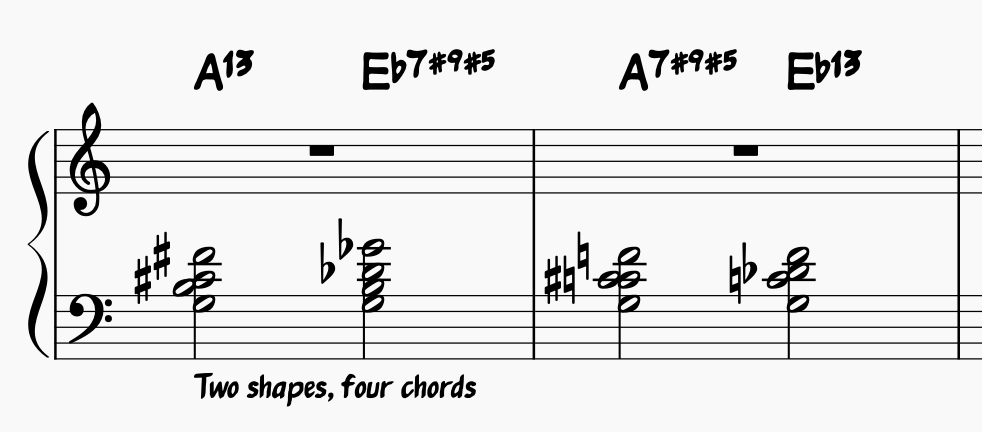
There are only two chord shapes, but they are written (and interpreted) differently depending on which of the two tritone-substitution chords they are used for.
When viewed as an A chord, the first notes (G-B-C#-F#) form A13. When viewed as an Eb chord, the same notes (G-B-Db-Gb) form Eb7#9#5.
Similarly, the second set of notes (G-C-C#-F) make A7#9#5 or (G-C-Db-F) Eb13.
The first chord shape has the intervals:
F#
P4
C# P5
M2 M7
B A4
M3
GThe second chord shape has the intervals:
F
M3
C# P4
m2 m7
C A4
P4
GThese two shapes are the basis for nice voicings for dominant 7th chords, among others, so it is worth fully familiarizing yourself with them. Learn both shapes in all 12 keys and both inversions that fit within the low C to high C range. At least for simple keys, make sure you can picture both interpretations of the same chord given the tritone substitution.
It is also useful to practice these shapes in chord progressions. We haven’t talked yet about voicings for major and minor seventh chords, but one approach is to use the 3-5-7-9 notes of the chord. For example, here are a couple a II-V-I progression voicings for C Major, first using G13:
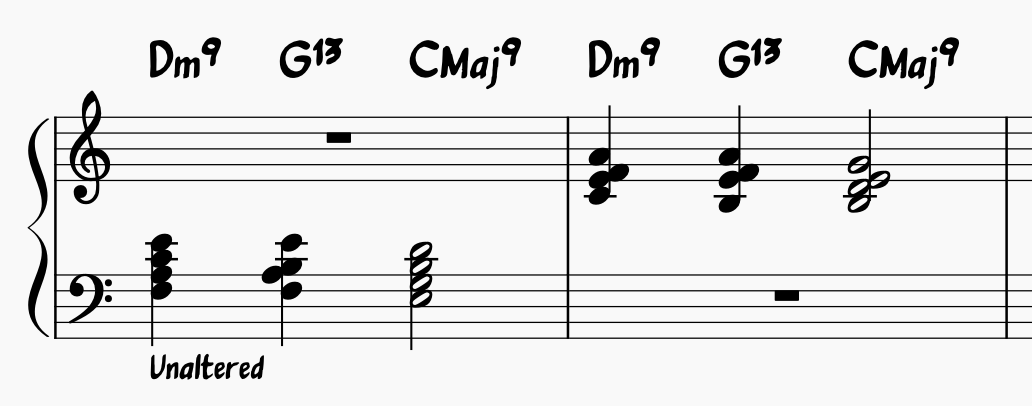
And then using G7#9#5:
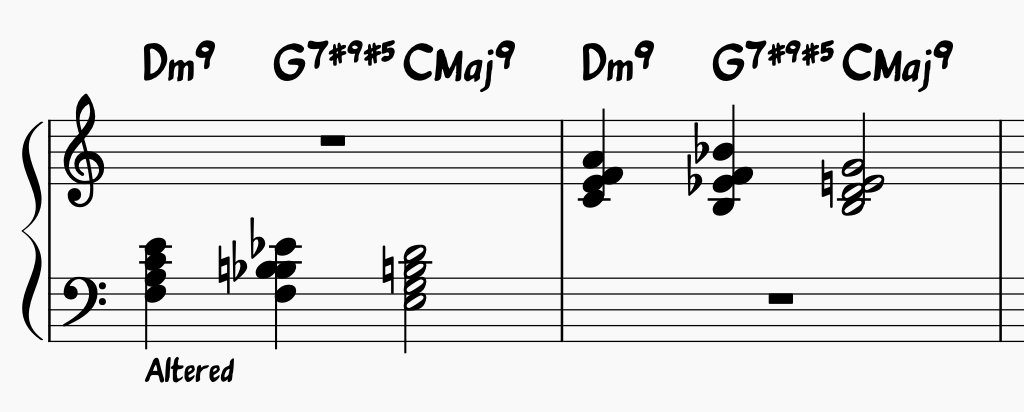
Beyond dominant seventh chords, there are other uses for these chord shapes.
Much as with the tritone substitution, the chords we have already seen can be reinterpreted as minor 6th chords, half diminished chords, or major 7th chords with a flat fifth.
For example, the G13 chord (F-A-B-E) can be viewed as:
Here are the half diminished and minor 6th forms in a couple chord progressions:

There are two more inversions of the standard shapes that also can prove useful.
Here are all four inversions for FMaj7b5:
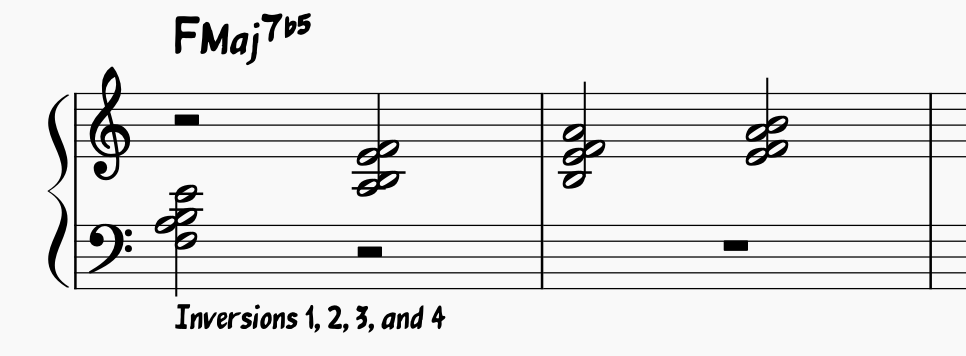
For some reason, I find myself using additional inversions 2 and 4 most often for the minor 6th and half diminished chords rather than dominant chords, but maybe that is more a question of style or general usage. The additional inversions are particularly useful to be able to grab the same notes without needing to move your hand too far.
For example, here are minor II-V-I progressions using these new inversions to reduce hand movement:
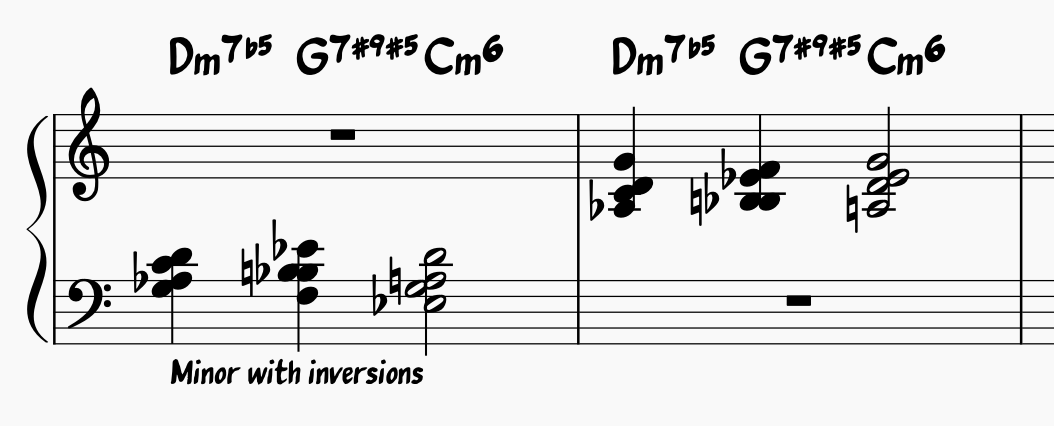
Notice how using one of these other inversions for the Dm7b5 or G7#9#5 chord reduces the amount of finger movement and produces stepwise motion for the top note.
Tim Blackman (2023-08-25)